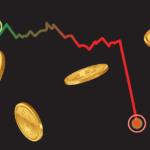The metal market is a living system that moves all the time. When supply is low, the cost rises strongly. When the request is moo, the cost falls slowly. The price of each metal depends on trading setups and global changes. Both buyers and sellers track these trends closely.The advertising is continuously in tune with worldwide information and asset changes. Metals like copper, brass, and nickel are utilized in each segment. Each overhaul causes a little or huge development in the rate.

The role of the supply chain
The supply chain is the heart of the metal trade. If mine production slows, prices rise. Transportation delays and fuel costs also affect rates. Weather problems and labor strikes have disrupted metal flows. A strong supply chain maintains market balance. When stocks are moved in a timely manner, prices are stable. Each region has a different supply trend, which guides trade flows. Control of the supply system is essential for market peace.
Demand Effect
Demand is the fundamental factor in every metal market. As technology and construction expand, the need for metals increases. More copper and steel are used in factories and auto plants. When demand is high, investor prices rise. When buyer needs are low, prices fall. The demand for each metal depends on sector and regional trends. The demand curve shows the full strength of the metal market.
Global trade factor
Global trade has a profound impact on metal prices. When import tariffs increase, costs increase. Currency rates and shipping fees change market trends. Export restrictions and trade blocs lead to metal shortages. Global policies and domestic deals determine market prices. When global trade is free, prices remain soft. Metal prices show new movements with every global setup.

Market speculation
Traders predict the trend
Market speculation creates a short-term trend in metal prices. When a trader expects a rate movement, the market becomes active. Every buyer and seller sets their trade according to this trend. When the signal is clear, the trader takes immediate action. If the forecast is strong, the trader buys more to make a profit. When the prediction is wrong, a loss is incurred. Market timing and trading confidence decide the profitability of each trade. Traders always pay attention to the world updates and the flow of demand. When the economy is stable, speculation remains smooth.
Effects of future contracts
Futures fuel the flow of speculation. When fund and stock data are strong, rates rise. Weak reports put investors in wait-and-see mode. The market takes a new direction with each new contract. Futures guide investor sentiment. When futures prices rise, demand increases rapidly. Each futures setup can change the price of the metal in a short period of time. Stock trends and trading lines fix the level of speculation. Market experts consider futures as signals for metal prices.
Investor market mood
Investors are the main players in market speculation. When global news is strong, investor confidence increases. Weak updates make investors delay deals. The market mood changes rapidly based on speculation. Investors depend on their planning policy and data. When both buyers and traders are active, the rate increases rapidly. Each new forecast changes the mood of investors. A smart investor always checks the pulse of the market and the flow of metal. When global trade is positive, speculation remains stable.

Tech Growth Impact
- Technological advances have taken the demand for metal to a new level.
- Electric cars and sun-oriented plants utilize huge sums of copper and nickel.
- Rare metals are frantically required to make batteries and chips.
- Every new machine and smart tool is incomplete without metal.
- The tech sector is doubling its mettle every year.
- Clean energy plans and green setups are creating a new metal cycle.
- Innovation is further expanding the role of metal in every project.
Risk level provision
Supply risk is a major concern for every firm and buyer. Wars and border blockades disrupt the flow of metal. Port jams and strikes delay shipments. When shortages occur, rates rise quickly. Supply chain failures halt projects. Safety stocks and planning systems cushion the market. Risk management is essential to every firm’s profitability.
Effect of financial growth
When the economy develops, the request for metals increases. Development ventures and street setups boost the utilization of steel and press. When the economy slows, rates ease. Metal prices are always a true indicator of the pace of the economy. When industrial production increases, the flow of metals also expands. Economic growth revitalizes every segment of the market.
The role of the investor
Investors are an active part of market movements. Funds and metal bonds increase investor interest. When inflows are high, prices rise. Weak mood and fear of risk slow down investor transactions. Market trends change in less time than investors plan. Investor confidence is an important factor in market equilibrium.
Policy and Regulation
Government policies and the tax system play a major role in the metal market. When duties and regulations are soft, rates remain calm. When taxes increase, costs increase rapidly. Import and export laws control the market balance. Prices vary from region to region due to policy changes. Smart policies and ease of trade help the market grow.
Effect of stock storage
Stock storage protects the metal trade. When stocks are high, rates are soft. When there is a shortage, rates rise. Smart storage plans protect the market. When firms control stocks, rates remain balanced. Metal storage stabilizes plants for all seasons.
Future prediction
Futures are based on timely data and trade news. Clean energy and green tech will drive demand to the next level. Mine upgrades and a strong supply are likely to keep prices soft. Future estimates are tied to trade growth and buyer sentiment. The metal world will thrive in the future with digital and eco plans.
Certainty of Insight
The metals market is a living and dynamic arena. Supply and demand are at the root of every trend. Technology and trade drive every price change. Both investors and firms must keep a close eye on the data and the market. A strong plan and clear vision ensure secure profits. Metal price movements are a sign of how fast global trade is moving.



